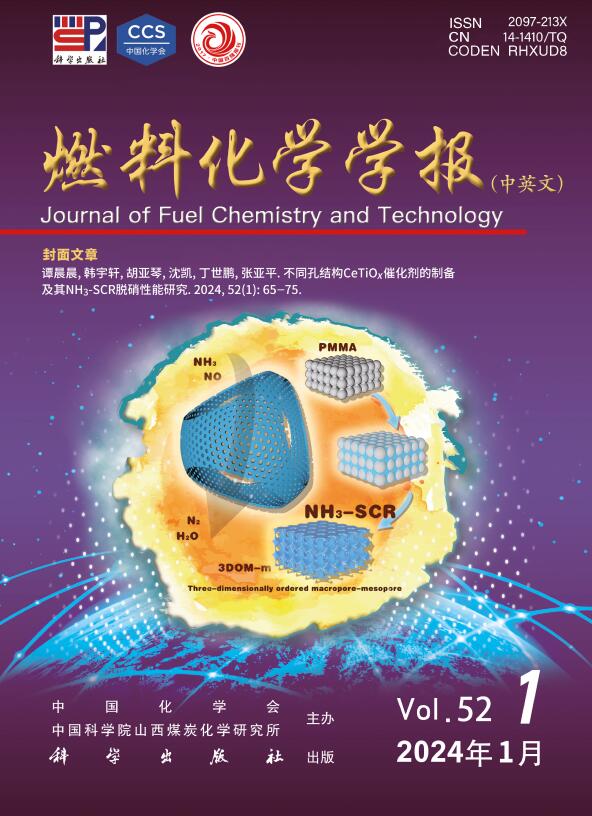提高平面微型超级电容器能量密度:低层石墨/炭黑/NiCo2O4复合材料的作用
Q3 Energy
引用次数: 0
摘要
用于微机电系统(MEMS)的平面微型超级电容器(PMSCs)的发展受到实现高能量和功率密度的挑战的严重阻碍。本研究通过利用丝网印刷技术利用创新的复合油墨制造高性能PMSCs来解决这一问题。这种墨水是由少层石墨烯(Gt)、炭黑(CB)和NiCo2O4协同混合而成,经过精心混合,形成导电且坚固的涂层,增强了PMSCs的电容性能。优化后的油墨配方和印刷工艺使微型超级电容器在0.05 mA/cm2电流密度下的面电容达到18.95 mF/cm2,面能量密度为2.63µW·h/cm2,面功率密度为0.025 mW/cm2。经过严格的20000次循环测试,该器件显示出令人印象深刻的耐用性,电容保持率为94.7%,证明了其长期应用的潜力。此外,PMSCs表现出优异的机械灵活性,在5000次弯曲循环后,电容仅下降3.43%,突出了其对柔性电子器件的适用性。将这些PMSCs集成到串联和并联配置中以定制电源的便利性进一步强调了它们在各种技术中集成电源解决方案的实用性。本文章由计算机程序翻译,如有差异,请以英文原文为准。
Enhancing energy density in planar micro-supercapacitors: The role of few-layer graphite/carbon black/NiCo2O4 composite materials
The advancement of planar micro-supercapacitors (PMSCs) for micro-electromechanical systems (MEMS) has been significantly hindered by the challenge of achieving high energy and power densities. This study addresses this issue by leveraging screen-printing technology to fabricate high-performance PMSCs using innovative composite ink. The ink, a synergistic blend of few-layer graphene (Gt), carbon black (CB), and NiCo2O4, was meticulously mixed to form a conductive and robust coating that enhanced the capacitive performance of the PMSCs. The optimized ink formulation and printing process result in a micro-supercapacitor with an exceptional areal capacitance of 18.95 mF/cm2 and an areal energy density of 2.63 µW·h/cm2 at a current density of 0.05 mA/cm2, along with an areal power density of 0.025 mW/cm2. The devices demonstrated impressive durability with a capacitance retention rate of 94.7% after a stringent 20000-cycle test, demonstrating their potential for long-term applications. Moreover, the PMSCs displayed excellent mechanical flexibility, with a capacitance decrease of only 3.43% after 5000 bending cycles, highlighting their suitability for flexible electronic devices. The ease of integrating these PMSCs into series and parallel configurations for customized power further underscores their practicality for integrated power supply solutions in various technologies.
求助全文
通过发布文献求助,成功后即可免费获取论文全文。
去求助
来源期刊

燃料化学学报
Chemical Engineering-Chemical Engineering (all)
CiteScore
2.80
自引率
0.00%
发文量
5825
期刊介绍:
Journal of Fuel Chemistry and Technology (Ranliao Huaxue Xuebao) is a Chinese Academy of Sciences(CAS) journal started in 1956, sponsored by the Chinese Chemical Society and the Institute of Coal Chemistry, Chinese Academy of Sciences(CAS). The journal is published bimonthly by Science Press in China and widely distributed in about 20 countries. Journal of Fuel Chemistry and Technology publishes reports of both basic and applied research in the chemistry and chemical engineering of many energy sources, including that involved in the nature, processing and utilization of coal, petroleum, oil shale, natural gas, biomass and synfuels, as well as related subjects of increasing interest such as C1 chemistry, pollutions control and new catalytic materials. Types of publications include original research articles, short communications, research notes and reviews. Both domestic and international contributors are welcome. Manuscripts written in Chinese or English will be accepted. Additional English titles, abstracts and key words should be included in Chinese manuscripts. All manuscripts are subject to critical review by the editorial committee, which is composed of about 10 foreign and 50 Chinese experts in fuel science. Journal of Fuel Chemistry and Technology has been a source of primary research work in fuel chemistry as a Chinese core scientific periodical.
 求助内容:
求助内容: 应助结果提醒方式:
应助结果提醒方式:


